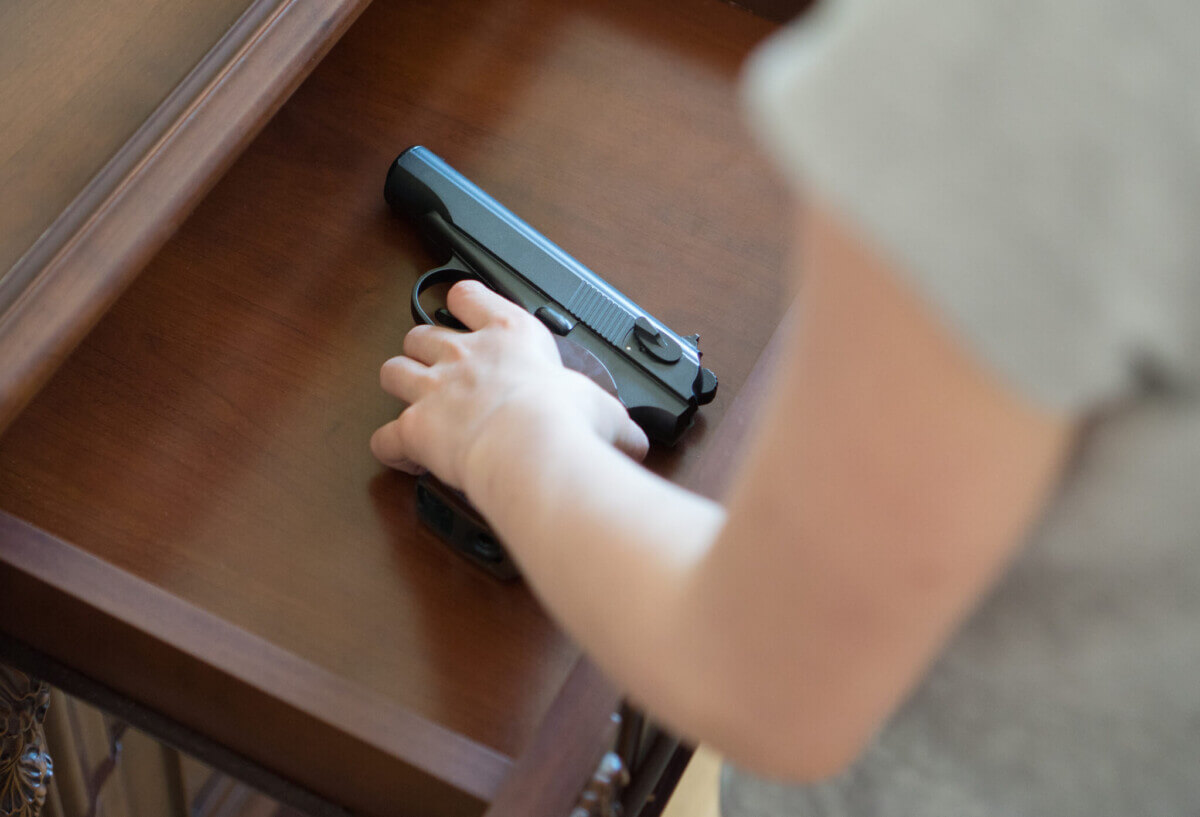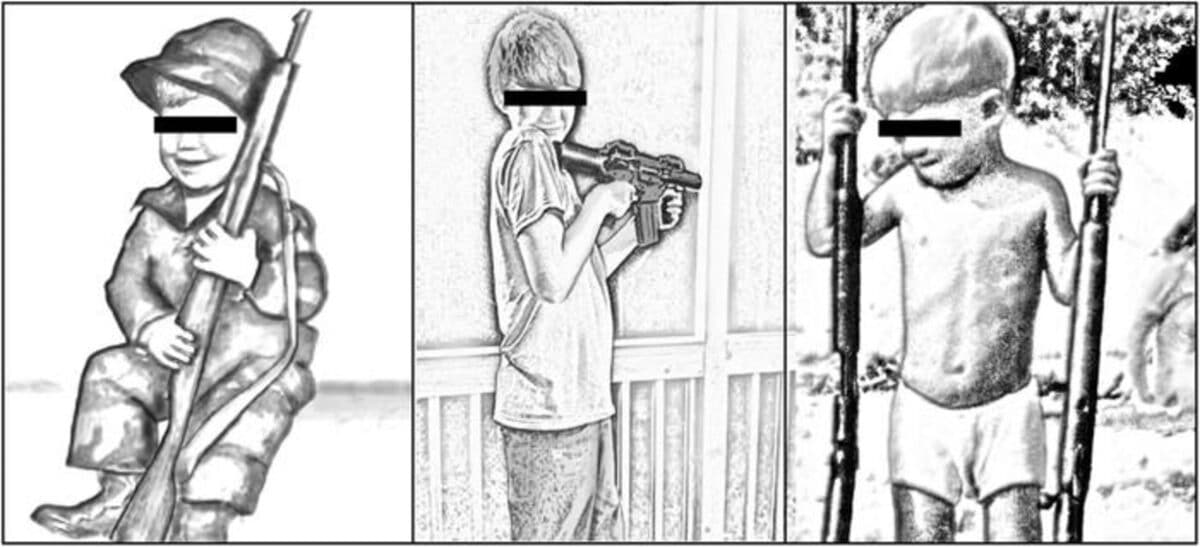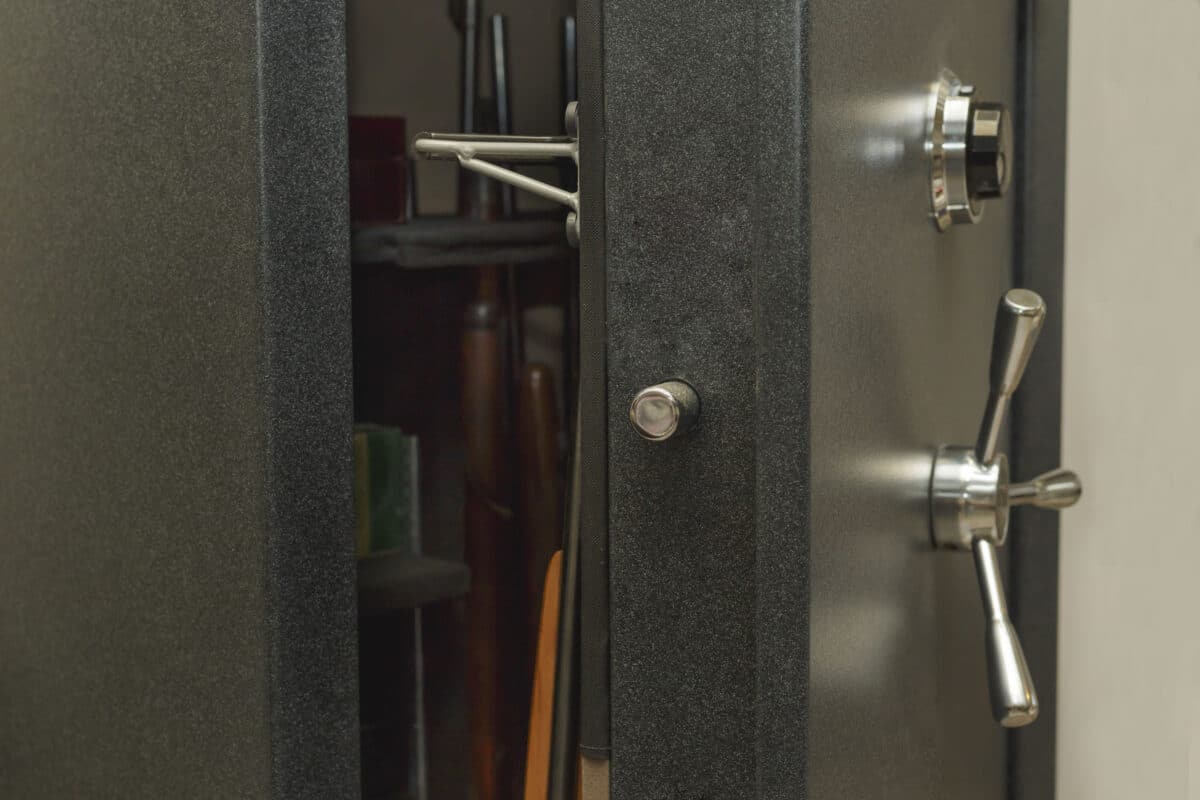
Easy access to guns is a common thread between school shooters in U.S history. (© M-Production - stock.adobe.com)
In a nutshell
- Every school shooter in U.S. history had easy access to a firearm, whether through their home, a legal purchase, or a close contact. The study found zero cases where a shooter faced significant barriers to getting a gun.
- Guns weren’t just tools; they were emotional companions. Many shooters described firearms as their “only friend” or “the love of my life,” with weapons often tied to family bonding, identity, and psychological comfort.
- Parents played a major role in gun access, often unintentionally. From buying guns as gifts to storing loaded firearms within easy reach, many families normalized gun use in ways that made violence tragically accessible.
ERFURT, Germany — In a country where guns are the leading cause of death for American children and teens, a troubling new study from Germany has found that all school shooters, from 11-year-olds to adults, had easy access to firearms. Not a single shooter in American history faced significant challenges obtaining their weapons, regardless of age, location, or decade.
The study, published in PLOS ONE, examined every school shooting in U.S. history, revealing that shooters commonly viewed guns as companions, with some even describing firearms as “the only friend I had,” “the love of my life,” or therapeutic objects providing comfort in otherwise troubled lives.
A Common Thread in All School Shootings
“All school shooters in U.S. history had easy access to the firearms they used — even those who were very young or severely mentally ill. Many came from a gun culture where firearms are symbols of affection, bonding, and identity. The weapons were often freely accessible in the shooters’ homes,” explains study author Anne Nassauer from the University of Erfurt, in a statement.

The study details disturbing patterns of gun culture within these shooters’ homes and communities. Family photos analyzed by the researcher show toddlers posing with rifles larger than themselves. In one particularly striking example, parents who forbade sugary snacks as unhealthy simultaneously allowed their troubled son to sleep with a loaded Glock under his pillow.
One 18-year-old wrote in his diary before attacking his North Carolina school that he considered his weapons to be like romantic partners, expressing deep attachment and loyalty to his firearms.
How Gun Culture Shapes Young Shooters
“This study shows school shooters don’t just use guns, but many grow up in worlds where guns are central to identity and belonging. Gun culture isn’t just a backdrop — it’s a formative part of many school shooters’ lives,” says Nassauer. “We can’t understand school shootings without understanding how gun culture shapes youth identities and gun access,” Nassauer states.
For younger shooters (under 18), guns frequently represented family bonding and group identity. Many were introduced to firearms as toddlers, with parents viewing shooting as a way to connect with their children. One mother explained her decision to buy her mentally ill 16-year-old son a shotgun by noting the limited activities available for mother-son bonding.
Older shooters showed different but equally concerning relationships with guns, viewing them as crucial to self-identity and psychological wellbeing. For socially isolated young adults struggling with mental health issues, guns often represented their only source of joy or connection to the world.
Nassauer describes a 20-year-old named Allan whose social anxiety made firearm shooting his only activity outside the home. His mother supported this interest and had planned to give him another gun as a Christmas gift, but Allan killed her before the holiday arrived and then attacked his former elementary school, killing 25 people.
How Shooters Acquire Weapons Despite Changing Gun Laws
Using court records, police reports, media coverage, interrogation videos, and social media, the study meticulously tracked how shooters acquired their weapons. Approximately 57% took firearms from home while 34% purchased them legally. None faced significant barriers.

Even as gun laws changed, shooters adapted. During the Federal Assault Weapons Ban (1994-2004), shooters simply switched from purchasing weapons to taking them from family members. When the ban expired, legal purchases increased, but the overall number of shootings didn’t significantly change. And the specific gun culture and associated meanings surrounding firearms among these shooters directly correlated with their easy access to weapons across all cases.
Perhaps most chilling are interviews with shooters themselves after their attacks. When asked if he should have had a gun, one responded with a simple negative. Another, before his attack, wrote an essay arguing that people with mental disorders like his shouldn’t have easy access to firearms. Several have become advocates for stricter gun laws from prison.
Prevention and Parental Accountability
“Guns don’t cause school shootings, but they make them possible — and often far too easy. There’s not a single school shooting in the U.S. where a shooter had trouble getting a firearm. So we have to ask: Why do only those with easy gun access do it? Are other potential shooters deterred because they don’t have a gun within easy reach?” asks Nassauer.
America continues to grapple with its epidemic of school shootings. Easy minor access to guns could be prevented particularly through safe storage practices and parental accountability.
In 2024, the first-ever manslaughter conviction of school shooter parents highlighted exactly that. The judge cited the parents’ provision of “unfettered access to a gun” and how they “glorified the use and possession of these weapons” as key factors in the conviction—precisely the cultural elements identified throughout Nassauer’s research.
Gun culture remains deeply embedded in American society, but this study suggests that making firearms harder to access, especially for minors, could be a way to mitigate school shootings. If even modest barriers had existed, many of these shootings might never have occurred.
Paper Summary
Methodology
The researcher analyzed all 83 U.S. school shootings from 1966 to January 2024, defining them as attacks carried out by current or former students at educational facilities involving firearms and multiple randomly-selected victims. For each case, Nassauer examined court proceedings, police data, news media coverage, autopsy reports, social media, and videotaped interrogations, triangulating sources to verify findings. The analysis combined qualitative in-depth case studies, cross-case comparisons, and descriptive statistics. Gun access was categorized using a four-level scale: “very easy” (1.0), “easy” (0.7), “difficult” (0.3), and “very difficult” (0).
Results
The study found consistent patterns across all school shootings. The median age of shooters was 17, with 59% under 18 years old. Gun access was classified as “very easy” for 79.5% of shooters and “easy” for 18.1%, with no shooters facing difficult access. Most shooters (56.6%) took firearms from home, while 33.7% purchased them legally. The researcher identified distinct patterns of meaning around firearms: younger shooters viewed guns as instruments of family bonding and group identity, while older shooters saw guns as central to self-identity and psychological well-being. Notably, during the Federal Assault Weapons Ban (1994-2004), shooters shifted from legally purchasing firearms to taking them from home, indicating that legislation affected access methods but not overall availability.
Limitations
The primary limitation noted is the lack of negative comparison cases—students with similar risk factors and easy gun access who never committed shootings. The researcher acknowledges more study is needed to determine whether easy gun access alone influences the decision to commit a shooting, or if it simply enables those already determined to attack. Additionally, more research is needed on how effective safe storage practices might be in preventing planned attacks versus accidents and suicides.
Funding
The author received no specific funding for this work. The Open Access Fund at University of Erfurt provided partial support for the publication costs of the article.
Publication Information
The study, titled “‘The only friend I had was my gun’: A mixed-methods study of gun culture in school shootings,” was authored by Anne Nassauer from the Faculty of Social Sciences, Law, and Economics at the University of Erfurt, Germany. It was published in PLOS ONE on April 23, 2025, and is available as an open access article under the Creative Commons Attribution License.







